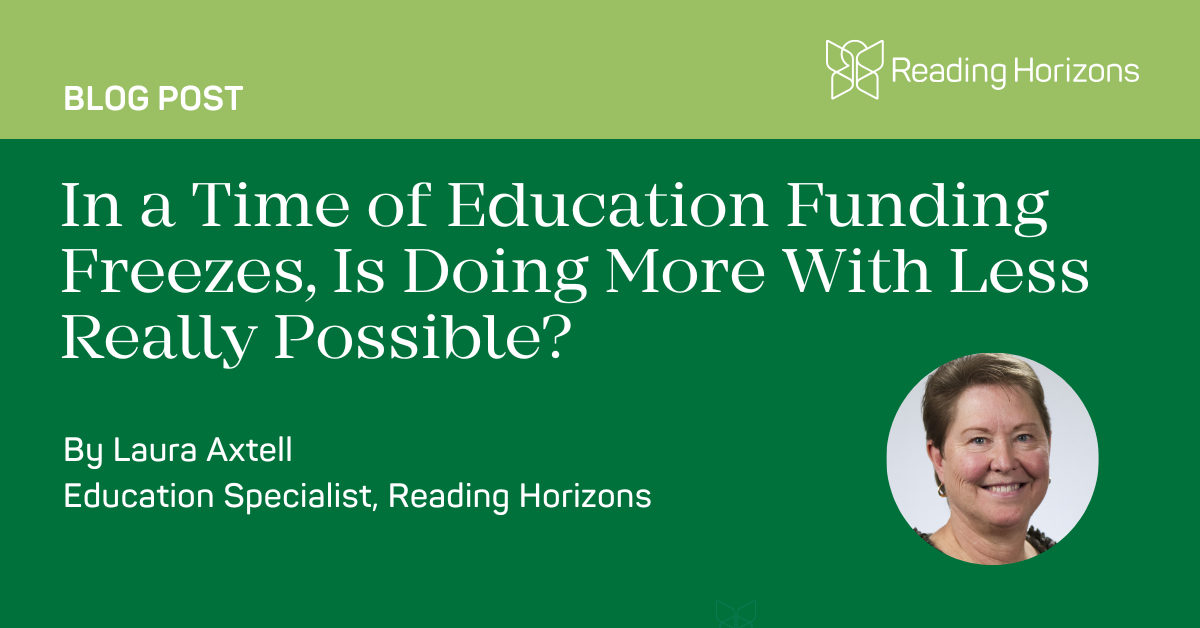By Laura Axtell, Education Specialist, Reading Horizons
Laura Axtell is an Education Specialist at Reading Horizons with Master’s degrees in special education and counseling. She has taught in public, alternative, and international schools, served as a school leader, and hosted the podcast Podclassed. Laura conducts educator training globally and specializes in literacy for secondary students, English learners, and adults.
The recent freeze on billions in federal education funding has left districts scrambling, especially those relying on grants to support children who need academic intervention and English learners. For the thousands of districts transitioning from whole-language to evidence-based literacy programs, the loss of professional development funding that would support the training to implement these programs will likely result in lower-than-expected outcomes. One of the most significant challenges will be for schools that have to eliminate before and after-school programs, leaving working parents without options. While policymakers debate the legality and future of these funds, schools are left with a stark reality: how to do more with less.
But perhaps this is also a moment to reconsider what more actually means.
Across the country, it’s common to see schools layering program upon program to meet the diverse needs of their students—after-school interventions, pull-out ESL instruction, special education support, summer recovery programs, and more. Each comes with its own set of materials, assessments, training protocols, and implementation hurdles (not to mention expensive annual subscriptions and ongoing training requirements). That complexity creates fatigue, not only for educators but also for the students who shuttle between different approaches, tools, and instructional philosophies.
In my work supporting schools, I’ve seen how this patchwork often leads to diminished results. Especially for older struggling readers, the path through intervention or special education becomes less a bridge to proficiency and more a holding pattern. We cannot afford that—especially not now.
Instead of multiplying programs, what if we focused on multiplying impact?
Districts can and should ask:
- Can one instructional model serve all tiers?
- Can the same materials be used flexibly in general education, special education, and ESL classrooms?
- Can teachers and paraprofessionals deliver effective literacy instruction with high-impact training that doesn’t require expensive or prolonged professional development?
- Can we reduce implementation complexity and still meet compliance and instructional rigor?
These aren’t just rhetorical questions—they reflect what some programs have already begun to prove. There are comprehensive literacy solutions designed to address multiple needs within a single system, featuring built-in data and diagnostics, flexible pathways for student progress, and instructional resources that support both intensive intervention and whole-class mini-lessons. These programs, endorsed by the Council of Administrators of Special Education (CASE), can significantly increase the reading abilities of diverse learners, including those receiving special education services.
This is a moment for schools to simplify their approach, not by lowering expectations, but by choosing tools that reduce fragmentation and amplify results. A single, coherent approach across tiers means a shared language, reduced training overhead, and improved alignment with the science of reading. Students don’t get lost in transitions between programs—they grow within a system that meets them where they are and moves them forward.
Funding may be frozen, but innovation doesn’t have to be. Let’s use this pause not to panic—but to pivot.

